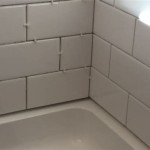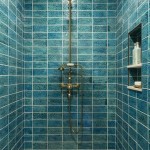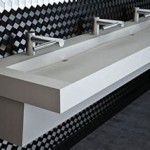Ada Compliant Commercial Bathroom Layout: Ensuring Accessibility for All
Ensuring accessibility for individuals with disabilities is paramount in any public space, and commercial bathrooms are no exception. The Americans with Disabilities Act (ADA) sets forth specific guidelines for the design and construction of accessible restrooms, aiming to provide equal access and independent use for people with disabilities. Understanding these guidelines, including those related to layout, is crucial for architects, designers, and building owners to create inclusive and functional spaces.
Key Elements of an Ada Compliant Commercial Bathroom Layout
An Ada compliant commercial bathroom layout encompasses several essential elements that contribute to accessibility and ease of use. These include:
1. Minimum Dimensions and Clearance
The ADA specifies minimum dimensions for various elements within the bathroom, including the toilet, sink, and grab bars. These dimensions ensure adequate maneuvering space for individuals using wheelchairs or other mobility devices. Sufficient clearance around fixtures is also crucial for wheelchair users to approach and use them comfortably.
2. Accessible Toilet Stalls
Accessible toilet stalls must meet specific requirements, including a minimum width and depth. They should also feature grab bars located on both sides of the toilet, at appropriate heights for easy reach. The toilet itself must be positioned at a specific height to facilitate transfers for wheelchair users.
3. Accessible Sink and Mirrors
The ADA requires accessible sinks to be positioned at a lower height than standard sinks. This allows individuals in wheelchairs to comfortably use the sink without difficulty. Accessible mirrors should be provided at a lower height or tilted to allow for easy viewing from a seated position. These modifications ensure that individuals of all heights can use the sink and mirrors safely.
4. Access Routes and Doors
Adequate access routes and doors are essential for wheelchair users and individuals with mobility impairments. Doors should be wide enough to accommodate a wheelchair, and threshold heights must be minimized to avoid tripping hazards. Ramps or elevators may be required to facilitate access to the bathroom level, depending on the building's design.
Benefits of Implementing Ada Compliant Bathroom Layout
Beyond complying with legal mandates, implementing an Ada compliant bathroom layout offers several significant benefits for commercial businesses:
1. Enhanced User Experience
Accessible bathrooms enhance the user experience for everyone, not just individuals with disabilities. Features like grab bars provide additional support for older individuals or those with temporary injuries, promoting a more comfortable and safe environment for all users.
2. Improved Brand Image
An inclusive and accessible bathroom reflects positively on a business's commitment to inclusivity and customer service. It demonstrates a commitment to providing an equal and welcoming experience for all patrons, contributing to a positive brand image and reputation.
3. Reduced Legal Risks
Properly designed and executed Ada compliant bathrooms minimize legal risks associated with accessibility violations. By adhering to the ADA guidelines, businesses can avoid lawsuits and penalties, ensuring legal compliance and peace of mind.
Considerations for Effective Implementation
To effectively implement an Ada compliant bathroom layout, several key considerations are important:
1. Consulting with Experts
Consulting with architects, designers, and accessibility specialists is crucial to ensure compliance with the ADA standards during the planning and construction phases. Their expertise helps navigate complex regulations and design requirements.
2. Using Appropriate Materials and Fixtures
Selecting durable and easy-to-clean materials and fixtures is essential for maintaining an accessible and hygienic bathroom environment. Opting for slip-resistant flooring and easily accessible controls for faucets and dispensers promotes safety and ease of use.
3. Regular Maintenance and Inspections
Regular maintenance and inspections are crucial to ensure the continued accessibility and functionality of the bathroom. This includes checking grab bars, doors, and other fixtures for wear and tear, and making repairs or replacements promptly to maintain compliance with the ADA standards.
By embracing the principles of inclusive design and implementing Ada compliant features, commercial businesses can create bathrooms that are not only accessible but also welcoming and functional for all users. This commitment to accessibility reflects positive values and builds a more inclusive and equitable environment for everyone.
Ada Accessible Single User Toilet Room Layout And Requirements Rethink Access Registered Accessibility Specialist Tdlr Ras

7 Important Ada Restroom Requirements For Your Commercial Space

Ada Bathroom Layout Commercial Restroom Requirements And Plans

Ada Bathroom Layout Commercial Restroom Requirements And Plans

Designing Your Ada Compliant Restroom Crossfields Interiors Architecture

Small Or Single Public Restrooms Ada Guidelines Harbor City Supply

I M Renovating My Office Does The Existing Bathroom Need To Be Ada Compliant Helping Nyc Long Island Commercial Tenants Owners And Developers

What Is Ada Compliance It S Effect On Commercial Bathroom Design

What Is The Smallest Commercial Ada Bathroom Layout

Designing Your Ada Compliant Restroom Crossfields Interiors Architecture
Related Posts







